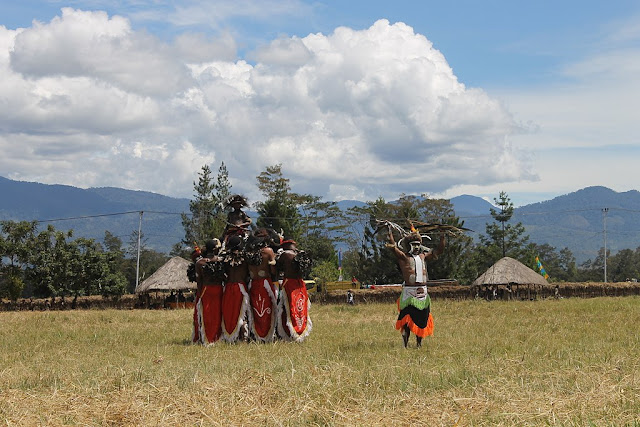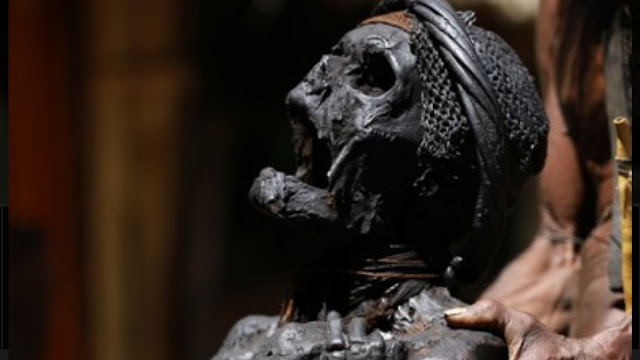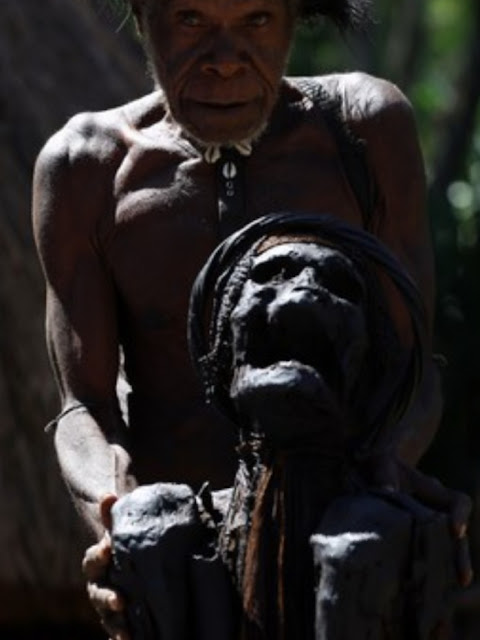Uniqueness of Papua - Mummy Baliem Valley
A dry body sitting with legs folded. The face is a gaping skull and looks up at the sky. The full clothing of a typical Papuan man in the form of koteka and some accessories are still attached to his body. A gripping atmosphere seemed to envelop him for a moment. the figure was a Dani warlord who had become a 370 year old mummy.
The tradition of mummifying dead bodies does not only occur in Egypt. Indonesia also has this tradition. The Dani, the ruler of the Baliem Valley are the perpetrators of this tradition. this is evident from the legacy of more than 370 years old mummies which are still preserved and maintained in Jiwika village, Kurulu district, Wamena, Papua.
As explained earlier, this mummy is a Dani warlord named Wimotok Mabel. in accordance with its name which means 'continuing war', this man indeed fought during his life. Until finally Wimotok gradually grew old and sick, but before he died, he advised him that after he died he would not be burned like the Dani tradition in general. Wimotok asks to be mummified. according to the villagers, this was done so that the commander's body would be a warning for the welfare of all his descendants in the future.
The process of mummifying the bodies of the dead is not simple. the way is unique, the body is positioned in a sitting position, complete with clothes of greatness. Then the body is smoked in front of a campfire for one month in Honai Pilamo, a house specifically for men. After that, the body will be wrapped in banana leaves to harden into mummies. this process will take around 5 years. For mummy care, men will moisten it with pig oil and store it every night in front of a campfire in Pilamo. This will make the mummy more durable without having to worry about being damaged by termites.
Tourists who want to see this mummy can come to the village of Jiwika, Kurulu district, which is about 30 minutes by car from the city of Wamena. The road to this village is relatively good and safe. only, to keep in mind is that to get rid of this mummy, usually the villagers will charge a fee of Rp. 300,000. It is indeed quite large, but it becomes feasible given the scarcity of experience gained.
In the Baliem Valley, there are actually more than one mummy. three mummies were found in Kurulu, three in the Assologima district, and one female mummy in Kurima. Indeed, the mummy has become one of the traditions of the Dani community, but its existence is now increasingly eroded in the era and only becomes a tourist attraction. however, the existence of mummies in the Dani tribe must be thumbs up and recognized as a tradition that enriches the treasures of Indonesian culture .
The tradition of mummifying dead bodies does not only occur in Egypt. Indonesia also has this tradition. The Dani, the ruler of the Baliem Valley are the perpetrators of this tradition. this is evident from the legacy of more than 370 years old mummies which are still preserved and maintained in Jiwika village, Kurulu district, Wamena, Papua.
The process of mummifying the bodies of the dead is not simple. the way is unique, the body is positioned in a sitting position, complete with clothes of greatness. Then the body is smoked in front of a campfire for one month in Honai Pilamo, a house specifically for men. After that, the body will be wrapped in banana leaves to harden into mummies. this process will take around 5 years. For mummy care, men will moisten it with pig oil and store it every night in front of a campfire in Pilamo. This will make the mummy more durable without having to worry about being damaged by termites.
Tourists who want to see this mummy can come to the village of Jiwika, Kurulu district, which is about 30 minutes by car from the city of Wamena. The road to this village is relatively good and safe. only, to keep in mind is that to get rid of this mummy, usually the villagers will charge a fee of Rp. 300,000. It is indeed quite large, but it becomes feasible given the scarcity of experience gained.
In the Baliem Valley, there are actually more than one mummy. three mummies were found in Kurulu, three in the Assologima district, and one female mummy in Kurima. Indeed, the mummy has become one of the traditions of the Dani community, but its existence is now increasingly eroded in the era and only becomes a tourist attraction. however, the existence of mummies in the Dani tribe must be thumbs up and recognized as a tradition that enriches the treasures of Indonesian culture .


